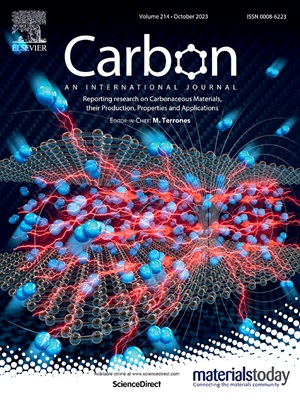Defect-functionality synergistic strategy enabling uniform Na plating for dendrite-free sodium metal anodes
IF 11.6
2区 材料科学
Q1 CHEMISTRY, PHYSICAL
引用次数: 0
Abstract
Sodium metal batteries (SMBs) are promising candidates for next-generation high-energy batteries due to the abundance and low cost of sodium. However, their practical deployment is hindered by uneven sodium deposition and dendritic growth, which leads to poor cycling stability and safety concerns. Herein, sodiophilic porous carbon hosts are fabricated via a defect engineering and surface functionalization strategy. The incorporation of moderate structural defects effectively reduces the sodium nucleation overpotential, while the oxygen-containing functional groups such as carboxyl (–COOH) and carbonyl (C=O) guides the formation of dense and uniform sodium layers. Theoretical calculations and experimental characterizations collectively reveal the synergistic role of defect sites and surface functionalities in promoting Na+ diffusion and regulating nucleation behavior. Consequently, the optimized ABC-11 achieves exceptional cycling stability with a Coulombic efficiency of 99.91 % over 1200 cycles at 1 mA cm−2/1 mAh cm−2 in asymmetric cells. The Na@ABC-11 symmetric cell also exhibits ultra-stable plating/stripping durability exceeding 2200 h. Furthermore, the assembled Na3V2(PO4)3 || Na@ABC-11 full cell delivers a high reversible capacity of 102 mAh g−1 and maintains 94 % of its initial capacity after 1200 cycles. This work highlights a cost-effective and scalable strategy for the structural design of carbon-based hosts, offering a viable pathway toward high-performance SMBs.

缺陷功能协同策略使无枝晶金属钠阳极镀钠均匀
钠金属电池(SMBs)由于钠的丰富和低成本而成为下一代高能电池的有希望的候选者。然而,它们的实际部署受到不均匀的钠沉积和枝晶生长的阻碍,从而导致较差的循环稳定性和安全性问题。本文通过缺陷工程和表面功能化策略制备了亲钠多孔碳载体。适度结构缺陷的引入有效降低了钠成核过电位,羧基(-COOH)和羰基(C=O)等含氧官能团引导了致密均匀钠层的形成。理论计算和实验表征共同揭示了缺陷位点和表面官能团在促进Na+扩散和调节成核行为中的协同作用。因此,优化后的ABC-11在不对称电池中,在1ma cm - 2/ 1mah cm - 2下,在1200次循环中,库仑效率达到99.91%。Na@ABC-11对称电池也表现出超过2200小时的超稳定镀/剥离耐久性。此外,组装的Na3V2(PO4)3 || Na@ABC-11全电池提供102 mAh g -1的高可逆容量,并在1200次循环后保持其初始容量的94%。这项工作强调了碳基宿主结构设计的成本效益和可扩展策略,为高性能smb提供了可行的途径。
本文章由计算机程序翻译,如有差异,请以英文原文为准。
求助全文
约1分钟内获得全文
求助全文
来源期刊

Carbon
工程技术-材料科学:综合
CiteScore
20.80
自引率
7.30%
发文量
0
审稿时长
23 days
期刊介绍:
The journal Carbon is an international multidisciplinary forum for communicating scientific advances in the field of carbon materials. It reports new findings related to the formation, structure, properties, behaviors, and technological applications of carbons. Carbons are a broad class of ordered or disordered solid phases composed primarily of elemental carbon, including but not limited to carbon black, carbon fibers and filaments, carbon nanotubes, diamond and diamond-like carbon, fullerenes, glassy carbon, graphite, graphene, graphene-oxide, porous carbons, pyrolytic carbon, and other sp2 and non-sp2 hybridized carbon systems. Carbon is the companion title to the open access journal Carbon Trends. Relevant application areas for carbon materials include biology and medicine, catalysis, electronic, optoelectronic, spintronic, high-frequency, and photonic devices, energy storage and conversion systems, environmental applications and water treatment, smart materials and systems, and structural and thermal applications.
 求助内容:
求助内容: 应助结果提醒方式:
应助结果提醒方式:


